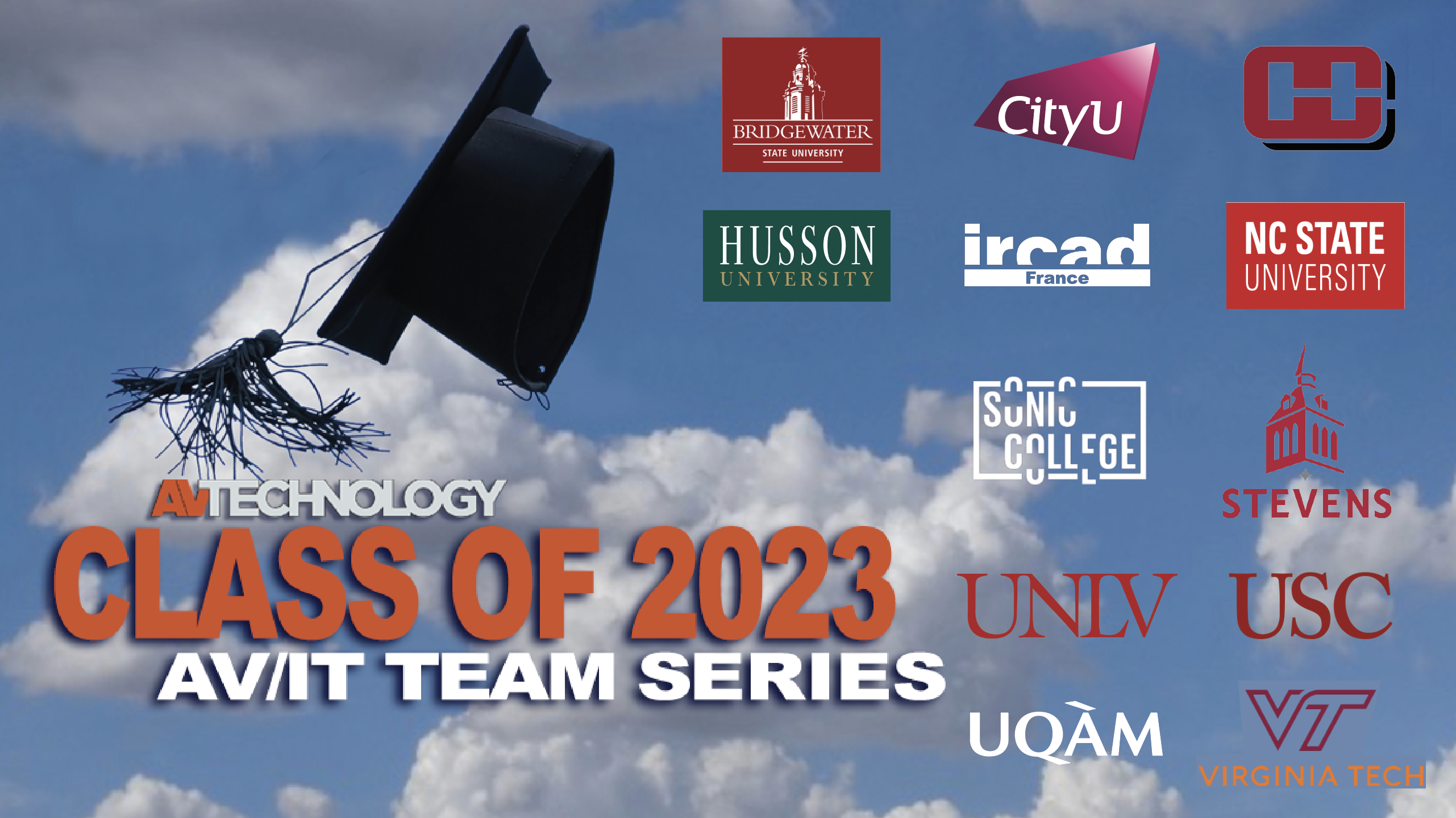
Have classroom technologies changed during the past three years? No, and yes.
Many integrated classroom technologies have been available and deployed for nearly a decade, but the institution's and student's needs and greater instructor acceptance have dramatically changed.
Most everyone agrees that the past few years have catapulted the AV/IT ahead five-plus years. AV/IT managers have been able to fast-track projects, and manufacturers have been able to fast-track product roadmaps.
AV Technology reached out to AV/IT thought leaders from 25 manufacturers to learn what is on the cutting edge of higher education AV solutions and to share their insight into designing the classroom for now and the future.
"When designing today’s classroom, as well as the classroom of the future, AV/IT managers can no longer expect that all participants of the class are on site; students and/or teachers may very well be remote," said Yamaha Unified Communications' senior director of technical sales and marketing, Holger Stoltze. "For a class to be successful, audio and video in the classrooms and remote locations need to adequately handle the demand for each application, while also providing equity for all participants."
"Designing for the classrooms of the future requires streamlined connectivity, collaboration, and communication," said Hal Truax, vice president of sales and marketing at Hall Technologies. USB workflows can be a real challenge, but Hall has made great strides in developing solutions that focus on achieving those three pillars of student success.
Distance learning has been a phrase in the AV/IT industry for years. "Capturing the content of a lecture and streaming it to students is just the end result of a complex planning and design process," said Fred Cain, industry development director, Consultant Community at Absen. "It must balance the capabilities of the LAN/WAN infrastructure; the requirements for in-classroom and remote participants and their ability to absorb material; as well as the pedagogy of instructors and their comfort level with the use of these tools."
Audio continues to be the top priority. "Whether students are in the classroom or connecting remotely, audio components must be able to adapt to the real-world conditions of hybrid/hyflex learning," aid Vanessa Jensen, senior market development specialist at Shure. "Shortfalls in classroom audio can have negative impacts on remote/hybrid learning and lecture capture—for both students and professors."

>> City University of Hong Kong
>> Bridgewater State University, Cyber Range and Security Operations Center
>> Hinds Community College, Workforce Division
>> Husson University, School of Technology and Innovation
>> North Carolina State University, James B. Hunt Jr. Library
>> North Carolina State University
>> Research Institute Against Digestive Cancer
>> Stevens Institute of Technology
>> University of Nevada, Las Vegas Kirk Kerkorian School of Medicine
>> University of Southern California, Digital Creative Lab
>> University of Québec in Montreal, School of Management
>> Virginia Tech, Institute for Creativity, Arts, and Technology
Moving to networked AV doesn’t need to be an all-at-once proposition. "The industry continues to make progress in how HDBaseT, AV-over-IP, and wireless technologies come together for universal connectivity inside the classroom," said Steve Bogart, business development manager, EDU at Atlona. "That means simplifying how lecturers and students connect to wireless presentation switchers, USB peripherals, and even Bluetooth technologies for audio."
Madhav Jain, insights manager, Education at Sennheiser highly recommends that AV and IT managers familiarize themselves with the Pedagogy-Space-Technology (PST) framework developed at The University of Queensland. "This methodology is a useful guide for the creation of new and modern teaching spaces. PST encourages looking at the pedagogy of the classroom (active learning, lecture hall, et cetera), and pragmatically seeking technology and a physical layout that will enhance and inspire the learning activities," he said. "The result would be a classroom where the teaching methodology is enabled by the physical space and empowered by technology."
The choice of professional headsets continues to increase, expanding the array of offerings that best fit the changing needs of educators and students. "A wide array of solutions, that allow for clear, crisp audio by varying personas, are providing educators and students with more choices," said Jennifer Orzechowski, director of marketing, Americas at EPOS. "Regardless of where and when learning takes place, today’s Active noise-canceling (ANC) headsets tune out background noise to offer clear audio and a distraction-free experience."







